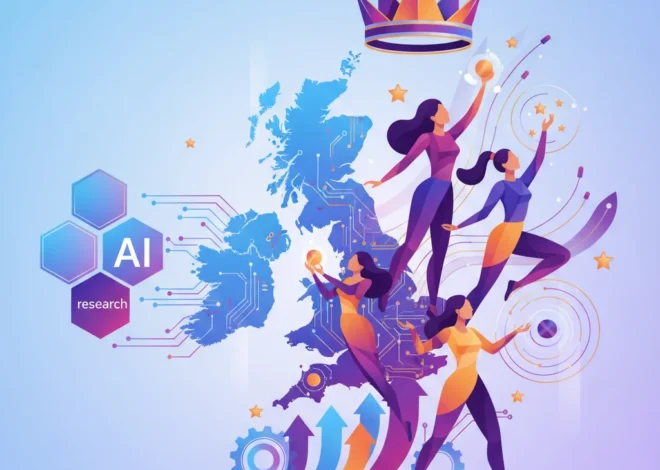
AI’s Dirty Secret: Why Your Company’s Biggest Hurdle Isn’t the Algorithm
The AI Gold Rush is On, But Most Companies are Still Digging with Spoons
Let’s be honest. The last couple of years have felt like a whirlwind. Generative artificial intelligence exploded into the public consciousness, and suddenly every CEO, startup founder, and marketing manager is asking the same question: “What’s our AI strategy?” We’ve all seen the dazzling demos—AI creating stunning images, writing flawless code, and promising to supercharge productivity. The hype is real, the potential is enormous, and the pressure to innovate is immense.
But beneath this glossy surface of progress lies a grimy, inconvenient truth that few are eager to talk about. For a huge number of established companies, the biggest barrier to the AI revolution isn’t a lack of ideas or a shortage of algorithms. It’s the digital equivalent of trying to install a state-of-the-art electric vehicle charger in a house with 100-year-old wiring.
The real challenge is the creaking, decades-old technology humming away in their server rooms (or, more likely, in a forgotten corner of a cloud server). This is the story of the AI dream colliding with legacy reality, and there’s no better case study than the UK’s largest online property portal, Rightmove.
Rightmove’s Billion-Dollar Problem: When “Transformation” is Too Big
Rightmove is a household name in the UK. With a market cap in the billions, it dominates the real estate landscape. When their new CEO, Johan Svanstrom, took the helm, he naturally wanted to leverage the power of AI to propel the company forward. The vision was clear: use machine learning to offer better insights, create new products, and deliver more value to real estate agents and homebuyers.
The problem? When they lifted the hood, they didn’t find a sleek, modern engine ready for an upgrade. They found a 20-year-old monolith. In the world of software development, a “monolith” is an application built as a single, enormous, tightly interwoven unit. Changing one small part can have unpredictable consequences for the entire system. It’s powerful and stable, but it’s also rigid, slow to update, and fundamentally at odds with the agile, modular world of modern AI.
As Rightmove’s former boss, Peter Brooks-Johnson, aptly put it, the challenge is finding a transformation project that’s just the right size. He famously quipped, “Hello, I need the biggest business transformation project you have. No, that’s too big . . .” (source). This perfectly captures the “Goldilocks” dilemma facing so many incumbents: the foundational changes required are often so massive they seem impossible to start, yet small tweaks won’t move the needle.
So, what does Rightmove’s “AI project” actually look like? It’s not about hiring a team of data scientists to build a fancy new recommendation engine. It’s a multi-year, eye-wateringly expensive journey to:
- Deconstruct the monolith into modern, independent “microservices.”
- Migrate their entire infrastructure to a more flexible cloud environment.
- Build a new, centralized data platform capable of feeding hungry AI models.
Only after all this foundational “plumbing” is complete can they truly begin to tap into the potential of large-scale machine learning and generative AI. The sexy part of AI is just the tip of a very large, very old, and very expensive iceberg.
The AI Project: Myth vs. Reality
The Rightmove story highlights a critical disconnect between how leadership often perceives AI projects and the technical reality on the ground. Here’s a breakdown of the two competing perspectives:
| The Mythical “AI Project” (The Boardroom View) | The Real “AI Project” (The Engineering View) |
|---|---|
| Focus: Deploying a new AI feature or tool for immediate ROI. | Focus: Re-architecting core systems to be AI-ready. |
| Key Tasks: Buy a SaaS tool, hire data scientists, run a pilot. | Key Tasks: Cloud migration, data pipeline engineering, monolith decomposition, API development. |
| Timeline: Weeks or months. | Timeline: Years. |
| Required Skills: Machine learning specialists. | Required Skills: Cloud architects, data engineers, DevOps specialists, cybersecurity experts. |
| Primary Cost: Software licenses and salaries for the AI team. | Primary Cost: Massive infrastructure overhaul and engineering resources. |
This chasm between expectation and reality is where most corporate AI initiatives stall, fail, or never even get started. The budget for a “quick AI win” is a rounding error compared to the cost of paying down two decades of technical debt.
When Hype Hits Reality: The Spectacular Misfire of a Peter Thiel-Backed AI Drone Startup
The “tax” is the massive, non-optional investment they must now make just to get to the starting line where today’s startups begin by default. A new startup can spin up a serverless, microservices-based architecture on AWS or Google Cloud in an afternoon. For an established player, achieving the same level of agility is a Herculean effort. This is why the real moat for many modern tech companies isn’t just their algorithm; it’s their architecture. It’s a stark reminder that in technology, the decisions you made ten years ago can dictate your ability to compete today.
The Greenfield Advantage: Why Startups Are Lapping the Giants
The situation at Rightmove is far from unique. Across finance, insurance, retail, and manufacturing, executives are looking at their legacy systems with a growing sense of dread. These systems, often built before the modern internet as we know it, are the bedrock of their business operations. They handle billions in transactions and serve millions of customers. They are, as one CTO described them, “load-bearing walls made of asbestos”—critically important but toxic to touch (source).
This is where startups have a staggering, almost unfair, advantage. They operate on a “greenfield”—a blank slate. They can build their entire company on modern principles from day one:
- Cloud-Native: They don’t migrate to the cloud; they are born in it. This gives them scalability, flexibility, and access to cutting-edge services on demand.
- API-First: They build their services to be modular and interconnected, making it easy to plug in third-party AI tools or build their own.
- Data-Centric: They design their data infrastructure from the ground up to be clean, accessible, and ready for machine learning analysis.
- Agile Culture: Their teams are structured for rapid iteration and experimentation, a stark contrast to the cautious, risk-averse culture often found in large corporations.
This architectural advantage means that when a new technology like generative AI appears, startups can integrate and experiment with it almost immediately. While the incumbent is holding committee meetings to approve a multi-million dollar budget for a two-year platform modernization project, a startup has already built and launched three different AI-powered features.
The Spyware on Your Cap Table: When Big Law and Big Money Back Controversial Tech
The Path Forward: A Pragmatic Guide to AI Transformation
So, is it hopeless for the established players? Absolutely not. But winning requires a fundamental shift in mindset away from chasing AI hype and toward a disciplined focus on foundational modernization. The journey from monolith to machine learning is a marathon, not a sprint.
For Business Leaders & Entrepreneurs:
Your AI strategy *is* your modernization strategy. Stop thinking about AI as a magic dust you can sprinkle on top of your existing business. Instead, champion the “boring” but essential projects that will make future innovation possible. Frame investments in cloud migration and system architecture not as IT costs, but as the price of admission to the next decade of competition. Find those “just right” projects that deliver incremental value while moving you toward your long-term architectural goals.
For Developers & Tech Professionals:
The most valuable skills in the AI era might not be what you think. While programming AI models is a crucial discipline, the demand for cloud architects, data engineers, and DevOps specialists who can dismantle legacy systems and build scalable, resilient infrastructure is exploding. Expertise in cybersecurity is also paramount, as new, interconnected systems create new vulnerabilities. Being the person who can bridge the old world and the new is a golden ticket for your career.
Conclusion: The Real AI Revolution is Under the Hood
The story of AI in the 2020s is a tale of two very different challenges. For startups, it’s a race to innovate on a modern, flexible foundation. For established companies, it’s a grueling battle against their own history—a fight to pay down decades of technical debt before they can even join the race. The Rightmove case study is a powerful reminder that the most profound transformations are often the least visible.
The companies that will thrive in the age of artificial intelligence won’t necessarily be the ones that are the first to launch a flashy chatbot. They will be the ones that have the courage and foresight to invest in the unglamorous, painstaking work of modernizing their digital core. Because the real AI revolution isn’t happening in the algorithm; it’s happening in the architecture.
The End of the Cushy Tech Job: Why AI and a Shaky Economy Are Rewriting Your Career


